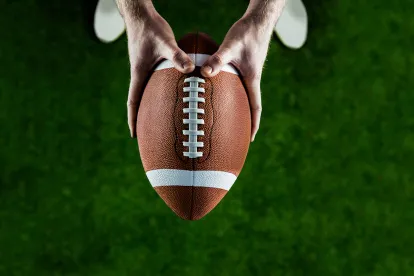Iowa lawmakers have expanded on federal efforts to make student-athletes employees. They have introduced legislation (H.F. 2055) to classify intercollegiate athletes at Iowa’s state universities as state employees. This follows a year in which numerous state legislative efforts established name, image, and likeness rights for student-athletes and federal court decisions further impacted student-athletes’ rights.
The bill also would allow the Iowa state board of regents to fix athlete compensation in the same way it sets compensation for school presidents and other state employees.
The bill was introduced by Representative Bruce Hunter (D-Des Moines), the ranking member of the Iowa House Labor Committee.
If approved, the bill would apply to athletes at Iowa’s three public universities (University of Iowa, University of Northern Iowa, and Iowa State University), which all compete at the NCAA Division I level. None of the athletes at Iowa’s private institutions (12 of which compete across the NCAA’s three divisions) would be impacted and these student-athletes would not be considered employees of their schools under the terms of the bill.
The proposed Iowa legislation is consistent with the goals announced at the federal level by National Labor Relations Board (NLRB) General Counsel Jennifer Abruzzo in her September 28, 2021, memorandum.
She stated that, based on her interpretation of the National Labor Relations Act (NLRA), certain student-athletes are employees of their academic institutions.
She asserted that these student-athletes have been misclassified and that they should receive all the benefits and protections of employee status pursuant to the terms of the NLRA.
Although no student-athlete has been willing to initiate the process of asserting a violation of the NLRA that Abruzzo outlined in her memorandum, an unfair labor practice charge was filed against the NCAA by Michael Hsu, co-founder of the college basketball player advocacy group, the College Basketball Players Association. Hsu filed the unfair labor practice charge (Case No. 25-CA-286101) with Region 25 of the NLRB, in Indianapolis, accusing the NCAA of violating Sec. 8(a)(1) of the NLRA “by classifying college athletes as student-athletes.”
Hsu could file a charge even though he is neither a student-athlete nor the recognized representative of any student-athlete because the NLRA does not require standing to file a charge and the NLRB’s regulations provide that “any person may file a charge alleging that someone has engaged in . . . an unfair labor practice” (emphasis added). Hsu’s charge is being investigated and, if the charge is transitioned into a formal complaint, an administrative hearing will likely be held later this year.
In addition, Senator Chris Murphy (D-Conn.) and Senator Bernie Sanders (D-Vt.) have introduced the College Athlete Right to Organize Act to amend the NLRA. It would amend the definition of employee under Section 2 of the NLRA to include student-athletes and provide student-athletes collective bargaining rights, regardless of any existing state law restrictions. The legislation provides jurisdiction to the NLRB to exercise authority over all institutions of higher education within intercollegiate sports for collective bargaining and labor disputes.
Further, the Johnson v. NCAA litigation is pending in the Eastern District of Pennsylvania. In Johnson, collegiate athletes argue they were employees of their institutions and are entitled to proper wages under the Fair Labor Standards Act. The plaintiffs succeeded in overcoming their institution and NCAA’s attempts to dismiss their claims.
Finally, compensating college athletes has continued to gain momentum since the June 2021 U.S. Supreme Court decision in NCAA v. Alston and, in particular, Justice Brett Kavanaugh’s concurring opinion questioning the NCAA and member schools’ circular justification for not paying college athletes because colleges do not pay student-athletes. Shortly after Alston, the NCAA introduced a new policy allowing college athletes to be compensated for their name, image, and likeness.




 />i
/>i

